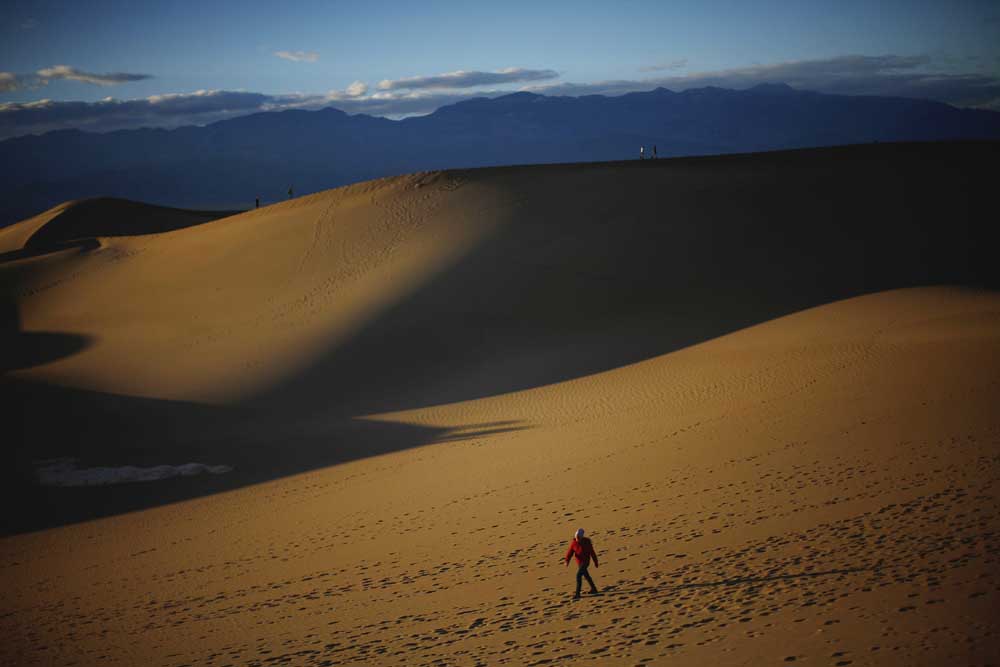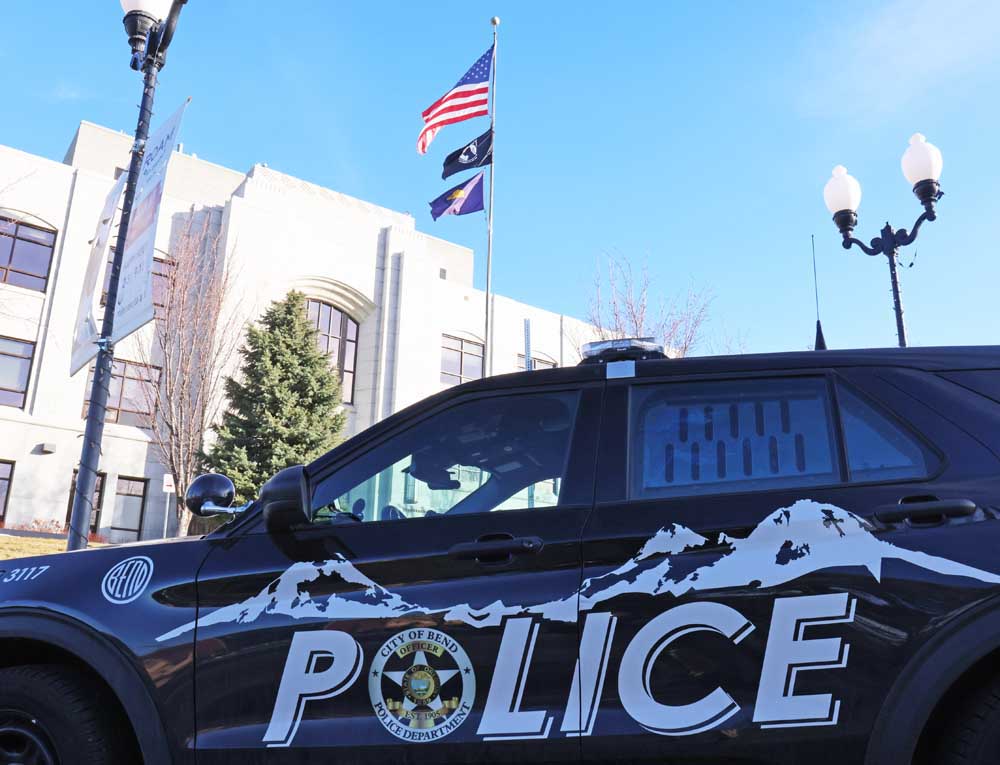Going to extremes at national parks
Published 12:00 am Sunday, February 15, 2015

- New York Times News Service file photoThe Mesquite Dunes are just one of the many incredible features in California’s Death Valley National Park.
I guess I go to extremes. I hadn’t consciously realized this proclivity until a recent trip to Iceland. The Land of Fire and Ice is jammed with extreme landscapes — and extreme contrasts.
In a few days’ drive, you’ll see nature at its strangest, most elemental and otherworldly. Ropy fields of lava, frozen midflow; bright blue waters bubbling and steaming from the middle of a glacier; billows of ash and smoke spouting from volcanoes like music from organ pipes.
Trending
Here, I had a chance to look at our planet evolving. Land being made, breaking down. Changing, heating up and melting down. Geologic time is notoriously slow, after all, so you don’t get much opportunity to see the process. There’s the occasional shift of a fault line or an eruption that results in a Vesuvius or Mount St. Helens.
That’s why I go to extremes, I guess. Why yours truly, who can barely tolerate the run from a warm restaurant to a freezing car, will spend hours traipsing around Yellowstone in 20-below winter. I, without a shred of desire to escape winter cold for a warm Caribbean beach, keep returning, in my mind, to a trip one April long ago to Death Valley — the hottest and driest place on Earth — thinking maybe I’ll do it in August next time.
Death Valley
The sky was white. The canteens were nearly empty. The air felt as if it had rushed out of a just-opened oven. The earth itself seemed to be burning. From the shimmering expanse of Death Valley’s Badwater Basin, I could hear the salt flats cooking: Snap. Crackle. Hiss. Pop.
I thought I knew hot. I’d lived in Tucson, Arizona, for five years by then. I was familiar with 105-degree days that dropped to 90 at night. The locals remind you it’s dry heat — at least it’s not humid. So you don’t sweat: You desiccate.
I was starting to get used to that feeling of all-pervasive heat — like a big arm reaching straight from the sun into my bones, wrapping hot fingers around them till even my marrow couldn’t hide. I was in awe of those living things that could survive here. I was beginning to appreciate the subtle beauty of the desert.
Trending
And then I got to Death Valley, the X Games of desert survival with all that snap-crackle-popping in the Devil’s Golf Course, a particularly dramatic part of Badwater Basin, where nothing lives at all. The 3.4-million-acre park is where the hottest air temperature in the world, 134 degrees, was recorded in 1913, and where the mercury has gone above 120 degrees for stretches of more than 40 days in a row. Where average precipitation is 2 inches a year, but sometimes drops to 0.64 inches or even not a drop at all.
A sign along one stretch of Badwater Basin reminds visitors of another extreme: The basin — the land trapped between the Amargosa Mountain Range on the east and the Panamint Range on the west — has been subsiding. At 282 feet below sea level, it is the lowest place in North America.
The Basin is only one of the extreme landscapes here. The constantly changing salt crystals and their growing and shifting through cycles of evaporation is what makes the snap-crackle-popping. Amazing, and just one of the strange and beautiful desert phenomena you’ll find in Death Valley, the largest national park outside Alaska. Multicolored claystones from the ancient ashfalls of Artist’s Drive, clay and mudstone badlands at Furnace Creek, five kinds of orange and pink sand dunes — much more than you could take in in a day.
Especially one of those energy-sapping 120-degree ones. Air conditioning, believe me, feels like a gift of the gods .
Do as smart desert creatures (including the local humans) do: Find yourself a little shade and rest in the middle of the day. By night you’ve got one more desert extreme: A sky with more stars than you can imagine.
Info: nps.gov/deva
Yellowstone
At the other end of the extreme spectrum was Yellowstone National Park in winter.
Where, one day, I took a walk, to the aural accompaniment of my snowpants.
WHISH-swish. WHISH-swish, WHISH-swish. God, I hate Gore-Tex. It’s so noisy.
I’m not, as I mentioned, a fan of cold. But I wore the Gore-Tex and was layered to Michelin Man proportions against the eyelash-freezing temperatures of winter in Yellowstone, to appreciate the extreme winter style of the park. Right now that appreciation involved a spontaneous wander down a narrow, snowy path I’d noticed not far from one of the turnoffs on the only road open in winter. Above, the bare, ice-encased branches bent toward one another, a little twinkling cathedral above my head. To my left, a stream gurgled faintly, muffled under a layer of ice. The stream continued over a little waterfall, which had stopped, frozen midtumble. And then the trees diverged, opening into a view of massive Yellowstone Lake, its surface a jigsaw puzzle of ice floes bearing shapes of water in various water moves — ripples, waves, eddies. All frozen in place.
That was one 30-minute walk. Then there were, of course, the wild thermal features, the geysers and the pools of hot steam. I stood one night a few minutes before Old Faithful’s spout time, waiting on a high rock to avoid standing in snow and ice. The geyser geysed, the viewers went back into the lodge, and then I heard a snort beside me. Looking down, I realized part of the black outcropping I was on wasn’t a rock. It was a dozing bison.
You actually have a pretty good chance of animal encounters in winter: I saw at least three or four bald eagles — white heads and yellow beaks a cinch to spot in the canopy. I had come to the park for its winter wolf-watching program, though I didn’t see any during my five-day stay. I saw coyotes, and wild sheep, and goats, even trumpeter swans. And of course lots of those flocks of raggedy-furred bison trudging down the roads with the most put-upon looks on their snow-frosted faces. The bare-bones setting of this season makes it not only easier to spot animals, but also to appreciate their plight at this time of year. You can see the struggle just to survive in every animal’s behavior. Life and death, black and white. This vastness of Yellowstone amplifies the forces at work in the natural world, and how insignificant each of us really is.
Info: nps.gov/yell
Hawaii Volcanoes
It was like the heavyweight battle of the century, and it was happening at Hawaii Volcanoes National Park on the Big Island of Hawaii. An inexorably marching, glowing river of lava oozing slowly to the front line, the sea, where it was met by raging surf hurling massively into the rocky shore. Contact announced in explosions of hissing steam.
Beach, schmeach. Maui, meh to me. The money shot — the experience of a lifetime for me on these islands — was the meeting of two elemental extremes, fire and water. The spectacle playing out in moves only nature can pull off: melted rock in glowing orange and yellow, even blue, a river of it streaming on a dark, doomed mountainside in the dead of night. Sealing the fate of most everything in its path. Scorching and then claiming the landscape, melting the soles of those visitors who’d ignored warnings and walked over innocent-looking but still red-hot black lava surfaces — drawn to get nearer to the show.
Can’t blame them for trying.
Hawaii Volcanoes National Park, 45 minutes south of Hilo, is home to Kilauea, one of the world’s most extreme — in this case fire- and lava-producing — volcanoes in the world. It’s been erupting since 1983, earning a nickname: the world’s only drive-in volcano. The 333,000-acre park also includes the less-active Mauna Loa.
The park features not only the star erupters, but also volcanic craters, bubbling thermal fields with sulfurous fumes, burnt-colored deserts and rain forests.
The park offers options that will let you get further into the experience as well, such as a tour through a lava tube or a stay at the Volcano House, where you can watch the earthly drama from its mountaintop location.
Info: visitarizona.com








